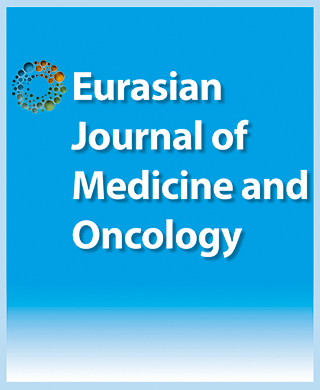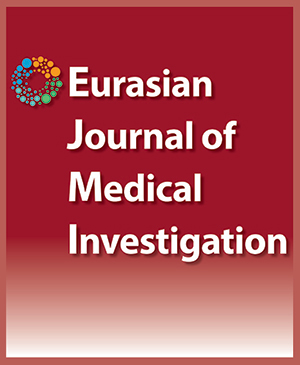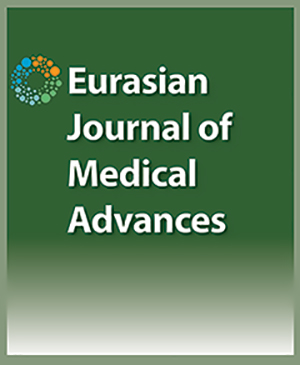

Cytokine-targeted therapy in severely ill COVID-19 patients: Options and cautions
Marveh Rahmati1, Mohammad Amin Moosavi21Cancer biology research center, Tehran University of Medical Sciences, Tehran, Iran., 2Department of Molecular Medicine, National Institute of Genetic Engineering and Biotechnology, Tehran, Iran.,
Dear Editor, The understanding of the cytokine storm mechanism(s) and its profile are crucial to developing effective therapeutic interventions in COVID-19. In this line, cytokine storm blockers and immune-host modulators are currently being applied in severely ill COVID-19 patients to cope with the overwhelming inflammation. However, most of the current reports highlighted different elevated cytokine patterns among severely ill COVID-19 patients, suggesting that more care should be taken before immunosuppressive therapy by cytokine blockers in COVID-19. Here, we summarize the more common cytokine profiles and cytokine-targeted therapy approaches that have been reported for severe COVID-19 patients. Finally, we underscore the urgent need to identify a precise cytokine panel before the administration of selective immunosuppressive therapy. Coronavirus disease 2019 (COVID-19) is an infectious disease caused by severe acute respiratory syndrome coronavirus 2 (SARS?CoV-2) with the symptoms including fever, dry cough and shortness of breath [1, 2]. Most COVID-19 patients will develop mild to moderate symptoms, while some infected people may face to hyper-inflammation induced by massive cytokines/chemokines production, called as cytokine storm, which may lead to fatal pneumonia and acute respiratory distress syndrome [1, 2]. Although, there is no specific antiviral therapy for COVID-19, understanding of cytokine storm mechanism in this disease can help to speculate possible therapeutic interventions [3]. Current reports have presented different cytokine profiles in patients with severe COVID-19 [1, 4-9]. For example, the higher levels of interleukin (IL)-2, IL-7, IL-10, tumor necrosis factor (TNF), granulocyte-colony stimulating factor (G-CSF), interferon gamma-induced protein 10 (IP-10; CXCL10), MCP-1 (CCL2) and MIP-1A (CCL3), but not IL-6, have been first shown in intensive care unit (ICU) patients compared to non-ICU patients [1]. Subsequent studies revealed the contribution of other cytokines, including IL-1?, IL-1ra, IL-2R, IL-6, IL-8 (CXCL8), IL-17, interferon (IFN)-? and GM-CSF (granulocyte-macrophage colony-stimulating factor), during severe COVID-19 infections [4, 5, 8, 9]. Figure 1 displays the protein-protein interaction between these cytokines/chemokines. In most existing reports, the elevated levels of several cytokines/chemokine (ie., IL-6, IL-10, IFN-?, TNF and IP-10), have been greater emphasized in severely ill (ICU) COVID-19 patients than mild to moderate (non-ICU) group [1, 4-7]. Involvement of the T helper 2 cytokine IL-10, that suppresses inflammation, is a prominent feature of all reports, and an imbalance and/or exhaustion of T cells may be also involved. [1, 10]. Several approaches, including global targeting of the inflammation or neutralizing a single key inflammatory mediator, are being employed to cope with cytokine storm in COVID-19. Among key cytokines, IL-6 has attracted high levels of interest and antibodies that block the IL-6 receptor (tocilizumab and sarilumab) are currently under phase 2/3 clinical trials for the potential treatment of COVID-19 [2]. Targeting IFN-? is another promising approach, which has been highlighted by launching a clinical trial for JAK–STAT inhibitor (ruxolitinib) for controlling COVID-19 severity. [11] TNF acts upstream of IL-6 and anti-TNF therapies previously revealed protective effects in lethal SARS-CoV infection [12]. Several TNF-blocking antibodies (eg., adalimumab, etanercept, and golimumab) are successfully used to treat inflammatory diseases, and these therapies have been urgently recommended for the hospitalized COVID-19 patients [13]. IL-10 is likely upregulated to counter overwhelming infection during SARS-CoV-2 infection, but it may be also involved in the infiltration of inflammatory cells and lung fibrosis [14]. IL-10 blocking, alone or in combination with programmed cell death protein 1 (PD-1), is promising for reinvigorating exhausted T cells and may control COVID-19 pathogenesis [10]. Despite the benefits, there are still disadvantages, such as the development of chronic inflammatory disorders, thus more experimental studies should be done to clarify whether overactivation or ablation of IL-10 could be helpful for severe COVID-19. In some countries, including Iran and Turkey, tocilizumab is a recommended therapeutic strategy for ICU patients with severe COVID-19 [15]. However, it should be note that the elevated IL-6 levels, in common with other cytokines such as TNF, have no specific pattern in all severe COVID-19 patients, so that their levels were not associated with the disease severity in some patients [1, 4, 5]. Therefore, as patients with severe COVID-19 represent the differential cytokine patterns, more care should be taken before immunosuppressive therapy by cytokine blockers in COVID-19. This is important that the doctors evaluate a cytokine panel, at least including IL-6, IFN-?, and TNF-?, to precisely identify the needs of each patient before administration of selective immunosuppressive therapy. Obviously, a combination of immunosuppressive therapy with antiviral therapies that diminish virus titer should be also into account. Declaration of interests The authors declare no conflict of interest. Keywords: Covid-19 , SARS-CoV-2 , cytokine storm References: [1] Huang C, Wang Y, Li X, Ren L, Zhao J, Hu Y, et al. Clinical features of patients infected with 2019 novel coronavirus in Wuhan, China. Lancet. 2020;395:497-506. [2] Zhang C, Wu Z, Li J-W, Zhao H, Wang G-Q. The cytokine release syndrome (CRS) of severe COVID-19 and Interleukin-6 receptor (IL-6R) antagonist Tocilizumab may be the key to reduce the mortality. International Journal of Antimicrobial Agents. 2020:105954. [3] Zumla A, Hui DS, Azhar EI, Memish ZA, Maeurer MJTL. Reducing mortality from 2019-nCoV: host-directed therapies should be an option. Lancet. 2020;395:e35-e6. [4] Li B, Feng F, Yang G, Liu A, Yang N, Jiang Q, et al. Immunoglobulin G/M and Cytokines Detections in Continuous Sera from Patients with Novel Coronaviruses (2019-nCoV) Infection. Infection Available at SSRN. 2020. [5] Zhou Y, Fu B, Zheng X, Wang D, Zhao C, Sun R, et al. Pathogenic T cells and inflammatory monocytes incite inflammatory storm in severe COVID-19 patients. National Science Review. 2020. [6] Yang Y, Shen C, Li J, Yuan J, Yang M, Wang F, et al. Exuberant elevation of IP-10, MCP-3 and IL-1ra during SARS-CoV-2 infection is associated with disease severity and fatal outcome. medRxiv. 2020. [7] Gong J, Dong H, Xia SQ, Huang YZ, Wang D, Zhao Y, et al. Correlation Analysis Between Disease Severity and Inflammation-related Parameters in Patients with COVID-19 Pneumonia. medRxiv. 2020. [8] Zheng H-Y, Zhang M, Yang C-X, Zhang N, Wang X-C, Yang X-P, et al. Elevated exhaustion levels and reduced functional diversity of T cells in peripheral blood may predict severe progression in COVID-19 patients. 2020:1-3. [9] Wan S, Yi Q, Fan S, Lv J, Zhang X, Guo L, et al. Characteristics of lymphocyte subsets and cytokines in peripheral blood of 123 hospitalized patients with 2019 novel coronavirus pneumonia (NCP). Medrxiv. 2020. [10] Saeidi A, Zandi K, Cheok YY, Saeidi H, Wong WF, Lee CYQ, et al. T-cell exhaustion in chronic infections: reversing the state of exhaustion and reinvigorating optimal protective immune responses. 2018;9:2569. [11] Stebbing J, Phelan A, Griffin I, Tucker C, Oechsle O, Smith D, et al. COVID-19: combining antiviral and anti-inflammatory treatments. 2020. [12] Channappanavar R, Fehr AR, Vijay R, Mack M, Zhao J, Meyerholz DK, et al. Dysregulated type I interferon and inflammatory monocyte-macrophage responses cause lethal pneumonia in SARS-CoV-infected mice. 2016;19:181-93. [13] Feldmann MM, RN; Woody, JN; Holgate, ST; Winter, G; Rowland, M; Richards, D; Hussell, T. Trials of anti-tumour necrosis factor therapy for COVID-19 are urgently needed. Lancet. 2020. [14] Sun L, Louie MC, Vannella KM, Wilke CA, LeVine AM, Moore BB, et al. New concepts of IL-10-induced lung fibrosis: fibrocyte recruitment and M2 activation in a CCL2/CCR2 axis. American Journal of Physiology-Lung Cellular and Molecular Physiology. 2011;300:L341-L53. [15] H. K. Successful Treatment Strategy of Turkey against Covid-19 Outbreak. Eurasian Journal of Medicine and Oncology.177-8.
Cite This Article
Rahmati M, Moosavi M. Cytokine-targeted therapy in severely ill COVID-19 patients: Options and cautions. EJMO. 2020; 4(2): 179-181
Corresponding Author: Marveh Rahmati



